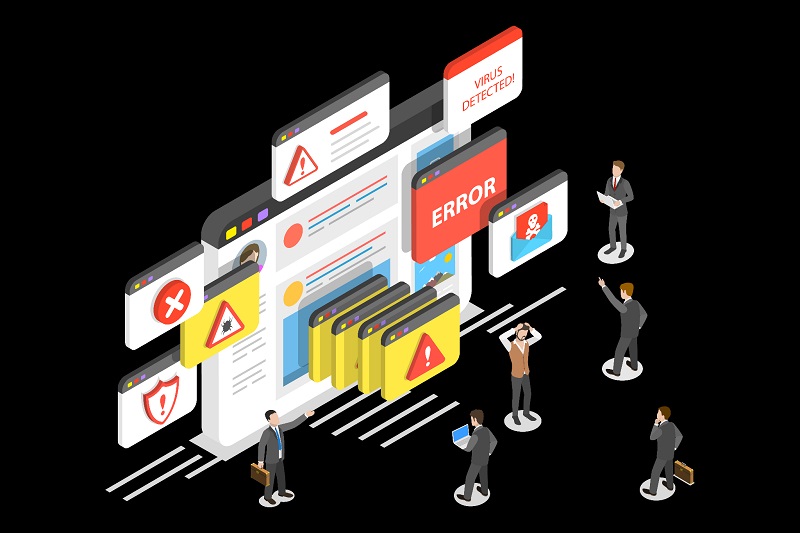The Role of Employee Training in Combating Phishing Attacks

Today, the threat of cyberattacks looms larger than ever before. Among these malicious threats, phishing attacks continue to be a prevalent and highly effective method used by cybercriminals to breach organizations’ security defenses. During the last quarter of 2022, there was a slight uptick in the number of unique phishing sites detected globally, reaching approximately 1.35 million.
In the battle against phishing attacks, employee training is one of the most crucial weapons in an organization’s arsenal. This article explores the significance of employee training in combating phishing attacks, outlining the challenges posed by phishing, the importance of educating employees, and effective training strategies to mitigate this ever-present threat.
Understanding Phishing Attacks
Phishing attacks are deceptive and manipulative tactics employed by cybercriminals to trick individuals into revealing sensitive information such as passwords, financial data, or personal details. These attacks often come in the form of seemingly legitimate emails, messages, or websites that entice recipients to click on malicious links, download harmful attachments, or provide confidential information.
Phishing attacks can have devastating consequences for individuals and organizations, leading to data breaches, financial losses, and reputational damage.
The Evolution of Phishing Attacks
Phishing attacks have evolved significantly over the years, becoming increasingly sophisticated and challenging to detect. In January 2023, 40% of surveyed adults worldwide reported device viruses, with 35% encountering mobile scams and 30% falling prey to phishing scams. Gone are the days of poorly written emails riddled with grammatical errors.
Modern phishing attempts are crafted with precision, often impersonating trusted entities, such as banks, government agencies, or colleagues. These attacks leverage social engineering techniques, psychology, and advanced technology to manipulate recipients into taking the desired actions, making them more dangerous than ever.
The Human Factor: Why Employees Are Vulnerable

One of the most significant vulnerabilities in an organization’s cyber security defense is its employees. No matter how advanced your cyber security infrastructure may be, human error remains a significant factor in successful phishing attacks. Employees are targeted because they can be tricked, coerced, or manipulated into divulging critical information or compromising security measures.
There are several reasons why employees are particularly susceptible to phishing attacks:
- Lack of Awareness: Many employees are not fully aware of the various tactics and strategies employed by cybercriminals in phishing attacks. This lack of awareness can leave them ill-prepared to recognize and respond to phishing attempts effectively.
- Trust in Technology: Employees often place a great deal of trust in their email systems and technology. They may assume that if an email lands in their inbox, it must be legitimate. This trust can lead to a false sense of security.
- Rushed Decision-Making: In today’s fast-paced work environment, employees may not carefully scrutinize every email or message they receive. Rushed decision-making increases the likelihood of falling victim to phishing attacks.
- Fear and Urgency: Phishing emails often create a sense of urgency or fear to compel recipients to take immediate action. Employees may react impulsively when faced with such emotions, making them more susceptible to phishing attempts.
The Importance of Employee Training
Given the critical role that employees play in an organization’s defense against phishing attacks, comprehensive and ongoing training is essential. Employee training serves as a proactive approach to strengthen an organization’s cybersecurity posture. Here are several compelling reasons why training is of paramount importance:
- Risk Mitigation: Training helps employees recognize the signs of phishing attacks and equips them with the knowledge to respond appropriately. This significantly reduces the risk of successful phishing attempts.
- Behavioral Change: Effective training programs can instill a security-conscious culture within the organization. Well-trained employees are more likely to adopt secure practices in their daily work, reducing the overall vulnerability to attacks.
- Cost Savings: Preventing a successful phishing attack can save an organization substantial financial losses, legal liabilities, and reputation damage. Investing in training is a cost-effective way to protect against potential cyber threats.
- Compliance: Many industries and regulatory bodies require organizations to implement cybersecurity training programs for employees. Compliance with these regulations is essential to avoid penalties and legal consequences.
Effective Employee Training Strategies

To combat phishing attacks successfully, organizations must implement robust training programs that engage employees and keep them informed about evolving threats. Here are some effective strategies for designing and delivering employee training:
- Interactive Workshops: Conduct regular workshops or training sessions that actively involve employees. Use real-life examples and interactive simulations to help employees recognize and respond to phishing attempts.
- Simulated Phishing Campaigns: Create controlled phishing campaigns within your organization to gauge employee susceptibility. Provide immediate feedback and additional training to employees who fall victim to these simulations.
- Phishing Reporting Systems: Implement a straightforward reporting system that allows employees to report suspicious emails or incidents promptly. Encourage employees to report any potential phishing attempts, creating a proactive defense mechanism.
- Continuous Learning: Phishing tactics evolve rapidly. Ensure that training programs are ongoing and adapt to new threats. Regularly update employees on emerging phishing trends and techniques.
- Gamification: Incorporate gamification elements into training programs to make learning more engaging and enjoyable. Create friendly competitions or challenges that reward employees for their vigilant behavior.
- Phishing Awareness Resources: Provide employees with easy access to resources such as articles, videos, and infographics that reinforce best practices for identifying and mitigating phishing threats.
- Role-Based Training: Tailor training content to specific job roles and responsibilities within the organization. Different departments may face unique phishing challenges, and customized training can be more effective.
- Testing and Assessment: Conduct regular assessments to gauge employees’ knowledge and awareness of phishing threats. Use the results to identify areas where additional training may be needed.
Mitigate Phishing Risks with CyberArrow Phishing Training
Employees represent a critical aspect of cybersecurity, and their awareness and readiness can make all the difference. CyberArrow’s Phishing Module and Awareness Training offer a comprehensive solution to assess, educate, and improve your organization’s defense against phishing attacks. By creating simulated phishing campaigns, reinforcing awareness training, and monitoring results, CyberArrow empowers organizations to enhance their cybersecurity posture effectively.
Book a free demo today to take the first step in safeguarding your organization against the ever-evolving threat of phishing attacks.











